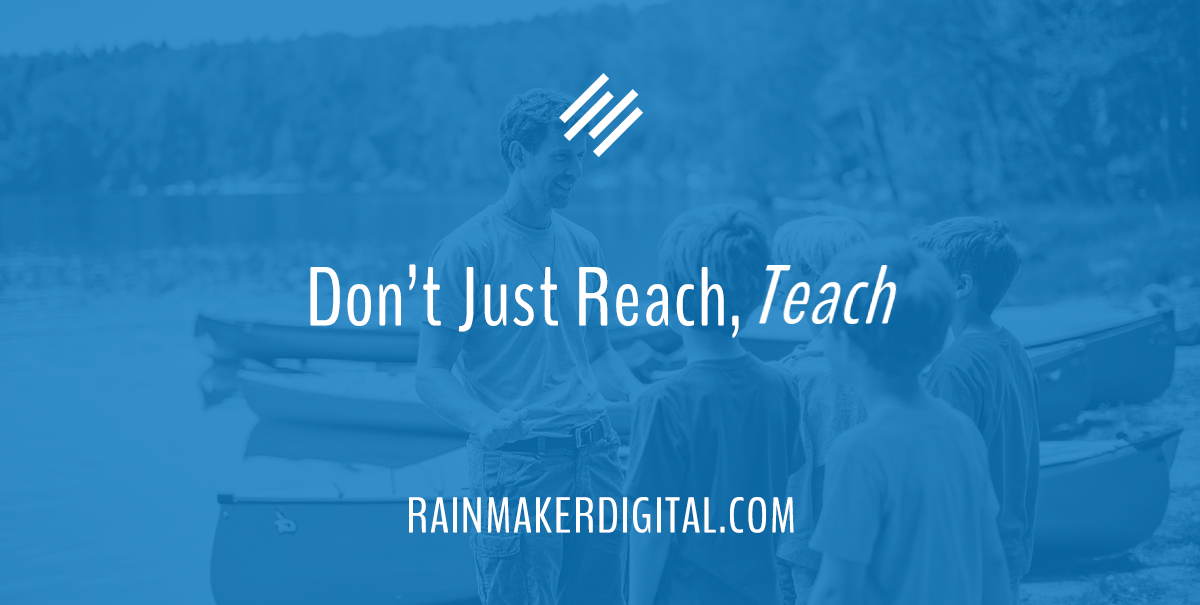Turn knowledge into profit.
That key tenet has been a big part of building our clients’ businesses over the years. No matter who you are, you have information that — presented in the right way — is useful enough for people that they’ll give you something in return. Attention. Contact information. Revenue.
But that’s harder now than it sounds. You can’t just publish knowledge and get noticed by your audience; a lot depends on how you present the information. I’ve done a lot of how-to speeches and classes over the years, and in that time I’ve learned a few steps you can use to take your knowledge and turn it into something useful to your audience. This works in any format: as a lesson in a course, a video or article, or a live presentation.
There are three A’s you need to create a lesson for your audience.
Analyze
First you need to figure out who the audience is for your content.
I once taught canoeing at a summer camp. Most of the kids I taught had never even seen a canoe before; so I started from the very basics. How do you get into and out of a canoe? How do you keep from doing damage to it or your paddles? They didn’t have any knowledge, so telling them about J-strokes and C-strokes would have been meaningless.
On the flip side, if you’re working with professional audiences, your content needs the detail and language that they’re seeking. For example, Bob Miner and Fred Schenkelberg are Rainmaker Platform clients that both deal with a more professional audience. Their content is complex to meet the audience’s expectations. Beginners may not even understand some content (though both have great beginner content too).
Whether your audience is new to your field or expert, understand where they’re coming from and produce accordingly.
Aim
The next step is to figure out what your audience wants out of your lesson. What information do you want them to take away? Don’t get too ambitious — only teach as much as you can expect them to retain in one session.
There are a lot of instructional models you can use. Consider EDGE: Explain, Demonstrate, Guide, Enable. This will help you build a lesson that will engage people and give them something meaningful to take away.
No matter what model you use, make sure that once they finish the lesson, you summarize what you told them and give them an action to take. Contact, more information, sign up, buy … without that, your audience will be confused.
Arrange
The simplest structure for your lesson is the one I was taught in speech class: tell them what you’re going to tell them, tell them, then tell them what you told them. When you’re teaching, it’s not enough to say something once — you have to repeat yourself, and you have to be clear in your repetition. Use this structure to drive a point home.
Take the time to edit your lesson or content, too. Most of the time you have limited time, attention and resources to get your message across to your audience. Be ruthless. The more tangents you remove from your lesson, the more likely people are to remember what you teach them.
There are whole libraries on how to teach; we’re not here to tell you the best model to use for your information. Regardless of your teaching model, the key is to get the knowledge out of your head and turn it into profit. The 3 A’s provide the foundation to not just reach, but TEACH your audience. Analyze, aim and arrange to create a course that connects. And if you need a hand, don’t hesitate to reach out. Just drop us a line, anytime.
Best Regards,
David Brandon
Copywriter
Rainmaker Digital Services
